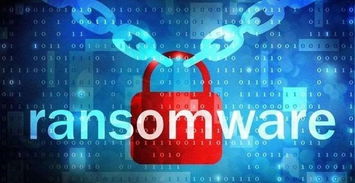来源:小编 更新:2024-11-20 01:40:51
用手机看

Ransomware has become a significant threat in the digital age, targeting individuals, businesses, and even government institutions. One of the most notorious aspects of ransomware is its demand for payment in Bitcoin, a cryptocurrency known for its anonymity. This article delves into the world of ransomware, Bitcoin, and the implications of this combination.

Ransomware is a type of malicious software designed to block access to a computer system or data until a ransom is paid. It typically spreads through phishing emails, malicious websites, or compromised software. Once activated, ransomware encrypts the victim's files, rendering them inaccessible until the ransom is paid.

Bitcoin has become a preferred payment method for ransomware attackers due to its decentralized nature and the difficulty of tracing transactions. This makes it easier for cybercriminals to receive payments without being identified or tracked by law enforcement agencies.

When a ransomware attack occurs, the following steps are generally followed:
The ransomware is delivered to the victim's device through various means, such as phishing emails or malicious downloads.
Once installed, the ransomware begins encrypting the victim's files, often with a unique encryption key.
A ransom note is displayed on the victim's screen, detailing the amount of Bitcoin to be paid and instructions on how to make the payment.
The attackers typically provide a timer, putting additional pressure on the victim to pay the ransom before the files are permanently deleted or the encryption key is destroyed.

While paying the ransom may seem like the quickest way to regain access to encrypted files, there are several risks involved:
There is no guarantee that the attackers will provide the decryption key after receiving the payment.
Paying the ransom encourages further cybercriminal activity.
It may be illegal to pay the ransom in some jurisdictions.

Preventing ransomware attacks involves a combination of education, cybersecurity measures, and best practices:
Keep software updated to ensure that security vulnerabilities are patched.
Use strong, unique passwords for all accounts.
Be cautious of phishing emails and avoid clicking on suspicious links or attachments.
Regularly back up important files to an external drive or cloud storage service.
Use reputable antivirus and anti-malware software to detect and prevent ransomware infections.

In the event of a ransomware attack, the following steps should be taken:
Do not pay the ransom unless you have consulted with legal counsel and understand the implications.
Isolate the infected device from the network to prevent the ransomware from spreading to other devices.
Report the attack to the appropriate authorities.
Seek assistance from cybersecurity professionals who may be able to help recover your files.

Ransomware and Bitcoin represent a significant threat to individuals and organizations alike. Understanding the nature of ransomware, the risks associated with paying the ransom, and the importance of cybersecurity measures can help mitigate the risk of falling victim to a ransomware attack. By staying informed and taking proactive steps to protect your digital assets, you can help ensure that you are not one of the many victims affected by this growing menace.
